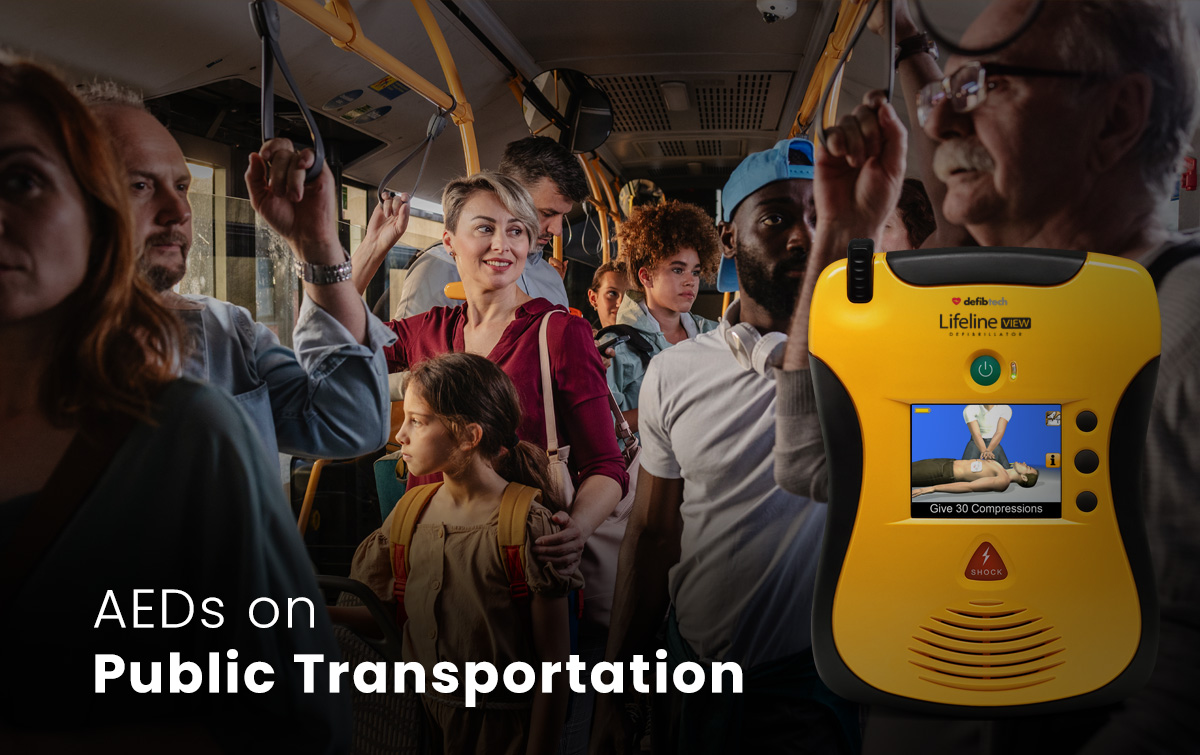News
Latest News
April 4, 2025

Each day millions of Americans start and/or end their day with a commute on public transportation. Public transportation is crucial because it provides access to employment for people without cars, helps manage traffic congestion, and promotes environmental sustainability by reducing car emissions.
Have you ever thought how you would react if a sudden cardiac arrest emergency occurred during your morning commute? How would EMS get to the emergency quickly and efficiently? Currently, AEDs are not required on all modes of public transportation. When sudden cardiac arrest strikes, the quicker an AED is used, the higher the chances are of survival.
Let’s take a look at different types of public transportation and why it is crucial for an AED to be accessible for commuters.
If a sudden cardiac arrest emergency occurs on a train and there is no AED available, the train must go to the next available train station for care. Even if that station is a few minutes away, if no AED is used, the chances of survival drop quickly. If an AED were accessible on the train, it could be used within minutes by the conductors working the train, making survival chances greater. The last thing we want to do when cardiac arrest strikes is wait and if there is no AED accessible on the train, the patient would have to wait until the next station to get the care they need.
Often times, buses are commuting through highly congested areas of traffic. If sudden cardiac arrest strikes on a bus and there is no AED accessible, there would have to be an AED quickly accessible in a local business, but how would anyone know it is even there? If an emergency strikes on a bus and 9-1-1 is called, the bus would have to wait until more help arrives. Those crucial minutes could be the difference between life and death for that passenger. If an AED is accessible on the bus, it could be used immediately, and life-saving measures can be taken while the ambulance is on the way.
Similar to a train, subways make multiple stops along a specific route. Sometimes there can be 10-15 minutes or even more between stops. If a sudden cardiac arrest emergency occurs between stops, it could take a significant period of time until the subway is able to stop, and emergency personnel are able to access the person. Additionally, sometimes cell phone service is a problem on subways which can create an obstacle when calling 9-1-1. AEDs should be placed on subways so that when an emergency occurs, the AED can be deployed immediately.
Sudden cardiac arrest occurs 365,000 times per year outside of the hospital in the United States. It is highly likely there will be an emergency on public transportation. Being prepared for sudden cardiac arrest is the best way to increase survival rates and one of the best ways to be prepared is to ensure there is an AED within 3 minutes of all locations.
To learn more about Defibtech and to join us on our quest to save lives from sudden cardiac arrest, visit www.Defibtech.com.